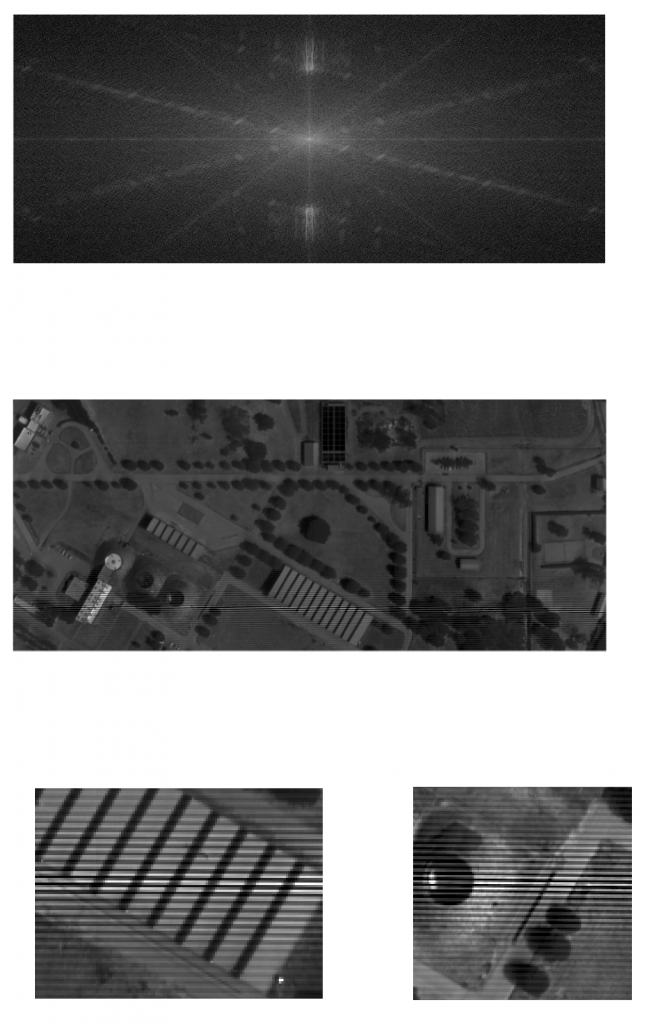In Satellite or Airborne Interferometric Hyperspectral Imaging, the Hyperspectral cube is obtained from several interferometric images which have the following structure
$$w = u(1+v)$$
where $w$ is the acquired image, $u$ is the panchromatic image, and the interferometric fringes in $v$ contain the hyperspectral information.
For further processing, it is often necessary to decompose $w$ via a biconvex minimization scheme similar to the PALM algorithm [2]
$$\min_{u,v} \| w – u(1+v) \|^2 + F(u) + G(v)$$
Current experimentation shows that this kinds of algorithms can provide satisfactory results, but better results might be obtained if the regularization scheme for $u$ is substituted by the the Shannon TV [3].
Supervision
Andrés Almansa, Clara Barbanson.
Programming Language
Matlab to use the current implementation of the additive model
Language of choice to implement de multiplicative model
References
[1] Ferrec, Y., Taboury, J., Sauer, H., Chavel, P., Fournet, P., Coudrain, C., … Primot, J. (2011). Experimental results from an airborne static Fourier transform imaging spectrometer. Applied Optics, 50(30), 5894–904. doi:10.1364/AO.50.005894
[2] J. Bolte, S. Sabach, and M. Teboulle, “Proximal alternating linearized minimization for nonconvex and nonsmooth problems,” Mathematical Programming, vol. 146, no. 1–2, pp. 459–494, Aug. 2014.
[3] R. Abergel, “Several mathematical models and fast algorithms for image processing,” Université Paris Descartes, 2016. [PDF]

